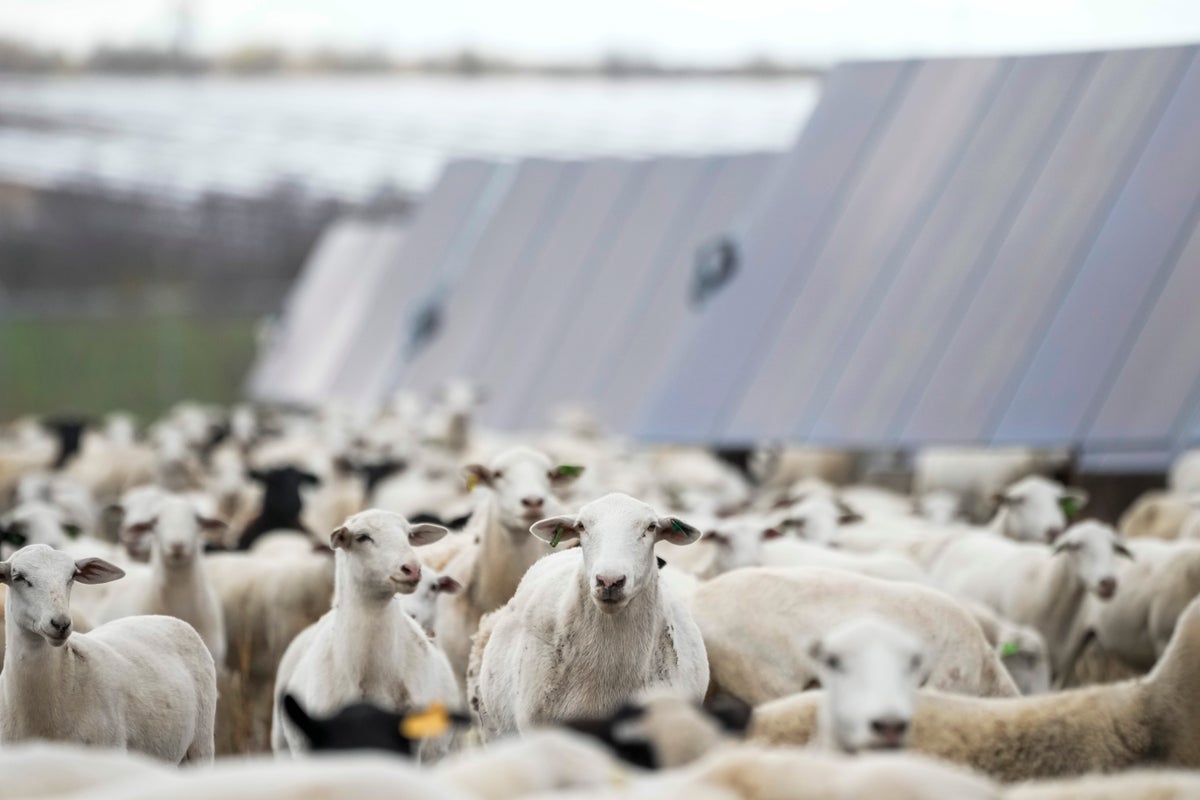
The booming solar industry has found an unlikely mascot in sheep as large-scale solar farms crop up across the US.
In Milam County, outside Austin, SB Energy operates the fifth-largest solar project in the country, capable of generating 900 megawatts of power across 4,000 acres (1,618 hectares).
How do they manage all that grass? With the help of about 3,000 sheep, which are better suited than lawnmowers to fit between small crevices and chew away rain or shine.
The proliferation of sheep on solar farms is part of a broader trend — solar grazing — that has exploded alongside the solar industry.
Agrivoltaics, a method using land for both solar energy production and agriculture, is on the rise with more than 60 solar grazing projects in the US, according to the National Renewable Energy Laboratory. The American Solar Grazing Association says 27 states engage in the practice.

“The industry tends to rely on gas-powered mowers, which kind of contradicts the purpose of renewables,” SB Energy asset manager James Hawkins said.
Putting the animals to work on solar fields also provides some help to the sheep and wool market, which has struggled in recent years. The inventory of sheep and lamb in Texas fell to 655,000 in January 2024, a 4% drop from the previous year, according to the most recent figures from the U.S. Department of Agriculture.
Because solar fields use sunny, flat land that is often ideal for livestock grazing, the power plants have been used in coordination with farmers rather than against them.
Sheepherder JR Howard accidentally found himself in the middle of Texas’ burgeoning clean energy transition. In 2021, he and his family began contracting with solar farms — sites with hundreds of thousands of solar modules — to use his sheep to eat the grass.
What was once a small business has turned into a full-scale operation with more than 8,000 sheep and 26 employees.
“Just the growth has been kind of crazy for us,” said Howard, who named his company Texas Solar Sheep. “It’s been great for me and my family.”
Some agriculture experts say Howard's success reflects how solar farms have become a boon for some ranchers.
Reid Redden, a sheep farmer and solar vegetation manager in San Angelo, Texas, said a successful sheep business requires agricultural land that has become increasingly scarce.
“Solar grazing is probably the biggest opportunity that the sheep industry had in the United States in several generations,” Redden said.
The response to solar grazing has been overwhelmingly positive in rural communities near South Texas solar farms where Redden raises sheep for sites to use, he said.
“I think it softens the blow of the big shock and awe of a big solar farm coming in,” Redden said.

Agrivoltaics itself isn't new. Solar farms are land-intensive and require a lot of space that could be used for food production. Agrivoltaics compensates by allowing the two to coexist, whether growing food or caring for livestock.
There is a lot still unknown about the full effects of solar grazing, said Nuria Gomez-Casanovas, an assistant professor in regenerative system ecology at Texas A&M University.
Not enough studies have been done to know the long-term environmental impacts, such as how viable the soil will be for future agriculture, although Gomez-Casanovas suspects solar grazing may improve sheep productivity because the panels provide shade and can be more cost-efficient than mowing.
“We really have more questions than answers,” Gomez-Casanovas said. “There are studies that show that the land productivity is not higher versus solar alone or agriculture alone, so it's context-dependent.”
As one of Texas' largest solar sheep operators, Howard has more clients than he can handle. He expects to add about 20 more employees by the end of this year, which would nearly double his current workforce. As for the sheep, he has enough already.







